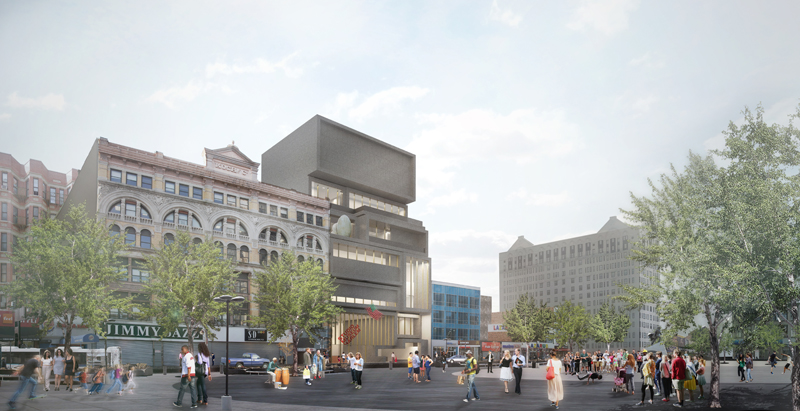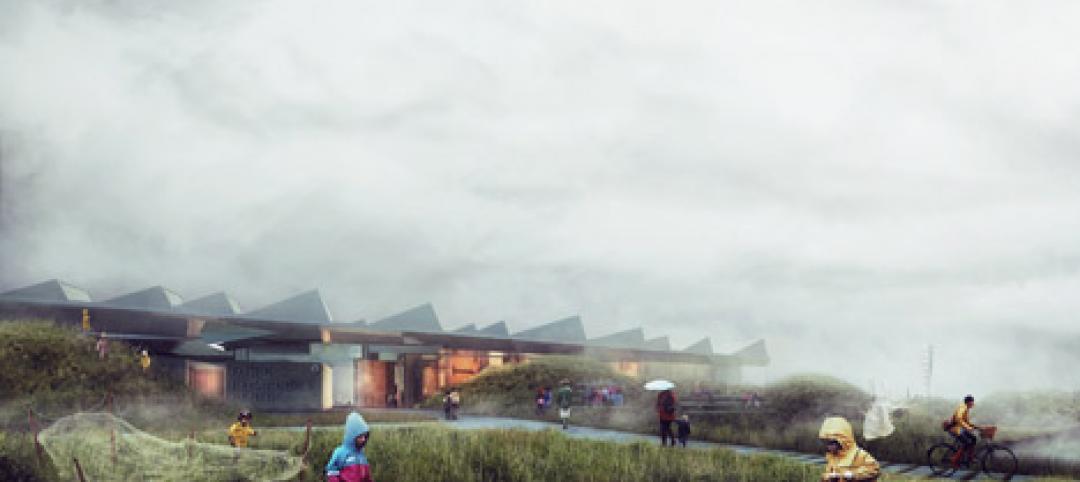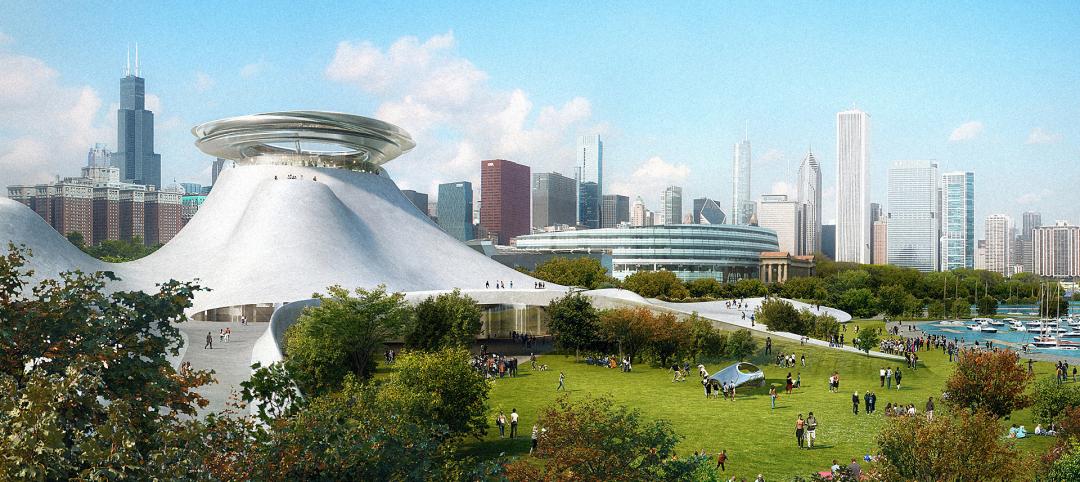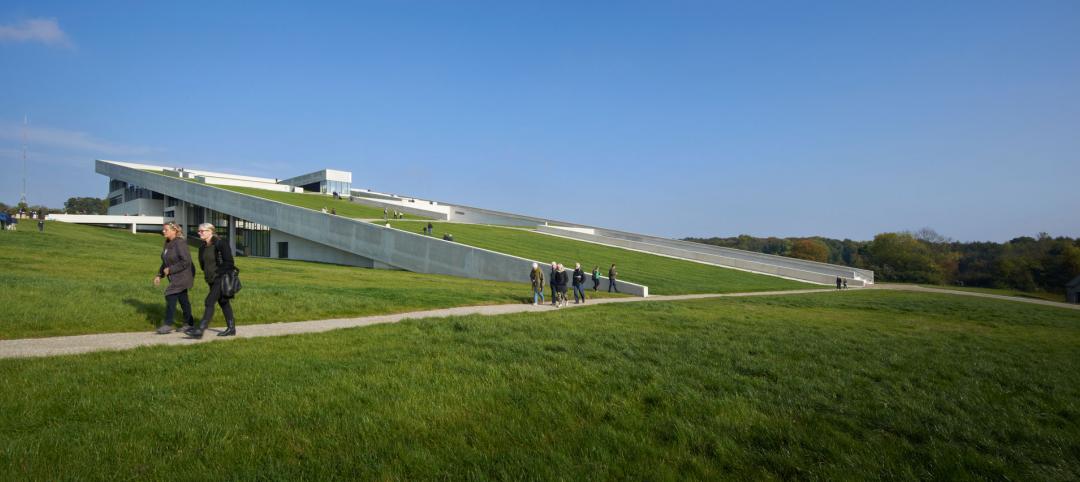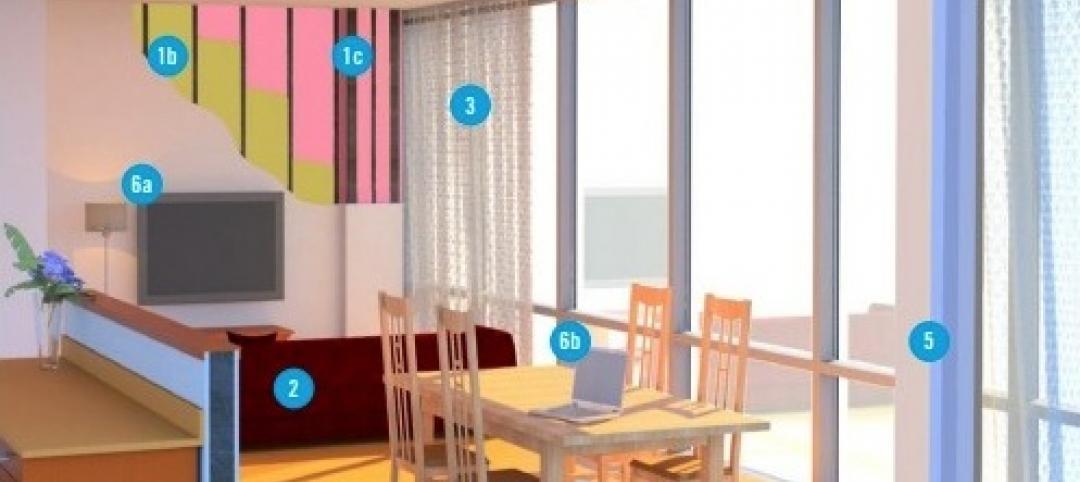For decades, The Studio Museum in Harlem has nurtured up-and-coming artists of African descent and brought them to prominence. Museum director and chief curator Thelma Golden told The New York Times that the museum has “outgrown the space” it currently occupies.
“Our program and our audience require us to answer those demands,” she adds. Hence, the museum has commissioned British-Tanzanian architect David Adjaye to design its new home, slated to begin construction in 2017 for a 2019 completion.
The museum intends to file plans for the building’s conceptual design with the Public Design Commission of the City of New York on July 14.
A press release from The Studio Museum describes Adjaye’s design as “the first home designed expressly for [the museum’s] program.” The public-private initiative, supported by the city of New York, will build the museum, a five-story, 71,000-sf building, on Manhattan’s West 125th Street.
The new scheme takes cues from the brownstones, churches, and bustling sidewalk of Harlem. A public lobby not only will bring grandeur that the museum’s current building can’t offer, but it will also act as a “living room” for the Harlem community and its visitors, thanks to a light-filled core that soars four stories.
Adjaye was selected out of several other architects because of “his sensitivity to artists as well as to the neighborhood,” Golden told the New York Times.
“For generations, artists living and working in Harlem have had an enormous impact on the character and sensibilities of this country. And for the last 50 years The Studio Museum in Harlem has been a pillar for this community, studying, promoting, supporting, and contributing to the cultural fabric of this extraordinary neighborhood and amplifying voices of artists of African descent for an international audience,” New York City Mayor Bill de Blasio said in a statement. “The City’s investment in the future of this organization signals our commitment to helping the Studio Museum grow, engaging a wide audience and maintaining New York’s position at the center of American spirit and identity."
Related Stories
| Nov 14, 2014
Bjarke Ingels unveils master plan for Smithsonian's south mall campus
The centerpiece of the proposed plan is the revitalization of the iconic Smithsonian castle.
| Nov 12, 2014
Chesapeake Bay Foundation completes uber-green Brock Environmental Center, targets Living Building certification
More than a decade after opening its groundbreaking Philip Merrill Environmental Center, the group is back at it with a structure designed to be net-zero water, net-zero energy, and net-zero waste.
| Nov 7, 2014
NORD Architects releases renderings for Marine Education Center in Sweden
The education center will be set in a landscape that includes small ponds and plantings intended to mimic an assortment of marine ecologies and create “an engaging learning landscape” for visitors to experience nature hands-on.
| Nov 5, 2014
The architects behind George Lucas' planned Chicago museum unveil 'futuristic pyramid'
Preliminary designs for the $300 million George Lucas Museum of Narrative Art have been unveiled, and it looks like a futuristic, curvy pyramid.
| Nov 3, 2014
IIT names winners of inaugural Mies Crown Hall Americas Prize
Herzog & de Meuron's iconic 1111 Lincoln Road parking garage in Miami Beach, Fla., is one of two winners of the $50,000 architectural prize.
| Oct 29, 2014
Diller Scofidio + Renfro selected to design Olympic Museum in Colorado Springs
The museum is slated for an early 2018 completion, and will include a hall of fame, theater, retail space, and a 20,000-sf hall that will showcase the history of the Olympics and Paralympics.
| Oct 23, 2014
Prehistory museum's slanted roof mimics archaeological excavation [slideshow]
Mimicking the unearthing of archaeological sites, Henning Larsen Architects' recently opened Moesgaard Museum in Denmark has a planted roof that slopes upward out of the landscape.
| Oct 16, 2014
Perkins+Will white paper examines alternatives to flame retardant building materials
The white paper includes a list of 193 flame retardants, including 29 discovered in building and household products, 50 found in the indoor environment, and 33 in human blood, milk, and tissues.
| Oct 15, 2014
Harvard launches ‘design-centric’ center for green buildings and cities
The impetus behind Harvard's Center for Green Buildings and Cities is what the design school’s dean, Mohsen Mostafavi, describes as a “rapidly urbanizing global economy,” in which cities are building new structures “on a massive scale.”
| Oct 12, 2014
AIA 2030 commitment: Five years on, are we any closer to net-zero?
This year marks the fifth anniversary of the American Institute of Architects’ effort to have architecture firms voluntarily pledge net-zero energy design for all their buildings by 2030.


